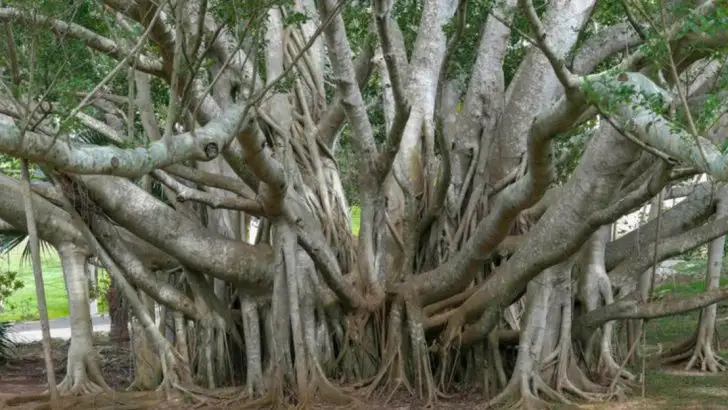Imagine a time when dinosaurs roamed the Earth, and life looked vastly different than it does today. Yet, despite the challenges of time, some plants have managed to survive through the eras—adapting and thriving for millions of years. These remarkable plants, often called living fossils, offer a glimpse into the ancient world that once existed.
In this article, we’ll explore 24 plants that survived the dinosaur era and continue to flourish today. From the towering cycads to the resilient ginkgo trees, these species have withstood massive changes to the planet’s environment. Join us as we uncover the fascinating stories of these ancient plants that are still a vital part of our world, carrying with them the legacy of the prehistoric past.
Ginkgo Biloba
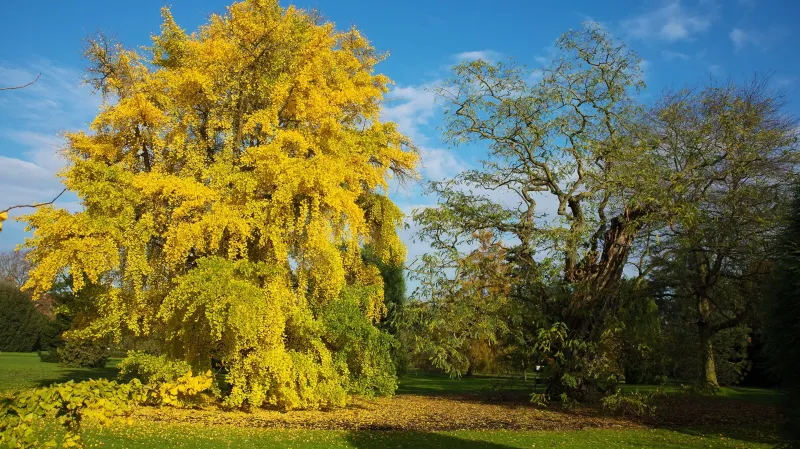
A living fossil, Ginkgo biloba has existed for over 200 million years. Known for its unique fan-shaped leaves, this tree has adapted to various climates, surviving even the atomic bomb in Hiroshima. Its resilience makes it a symbol of hope. In urban areas, ginkgos are planted for their beauty and hardiness. Their leaves are often used in supplements, believed to enhance memory. Despite modern challenges, they continue to thrive, proving their adaptability in changing environments. Their longevity and storied history make them a fascinating subject for both botanists and hobbyists alike.
Wollemi Pine
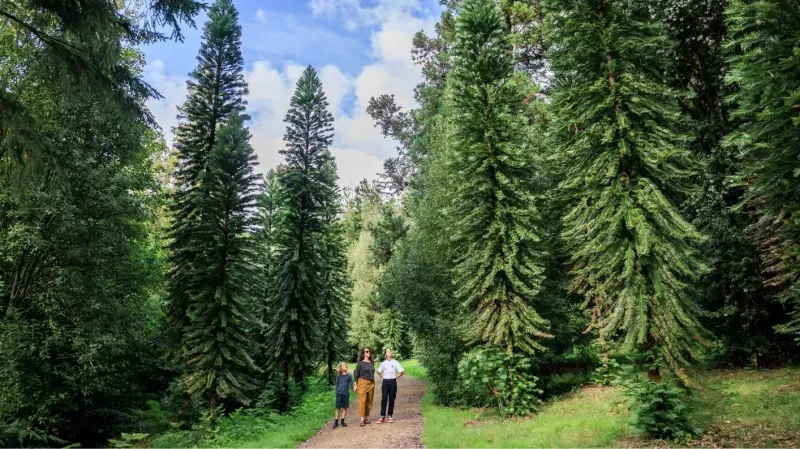
Discovered in 1994, the Wollemi Pine was once thought extinct, surviving since the Jurassic period. Its unique bubbly bark and fern-like foliage set it apart. Found in a remote Australian canyon, its discovery was akin to finding a dinosaur alive today. Conservation efforts have ensured its survival, with saplings now available for cultivation. This tree’s resilience and adaptability highlight the importance of preserving biodiversity. Its ancient lineage and mysterious origins captivate scientists and plant enthusiasts. The Wollemi Pine serves as a reminder of nature’s hidden wonders and the secrets still waiting to be uncovered.
Cycads
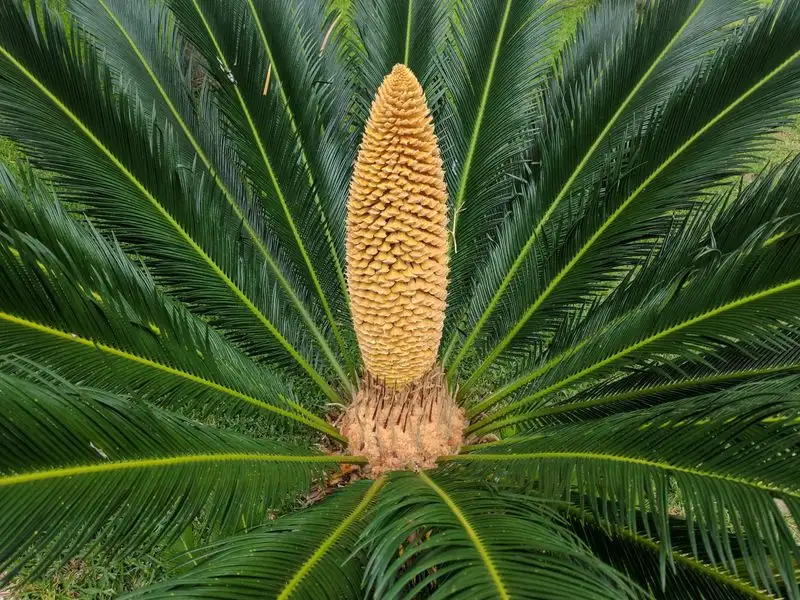
Cycads, often mistaken for palms, have been around for 280 million years. These hardy plants were once dinosaur food and have adapted to survive drastic environmental changes. Cycads are dioecious, meaning they have distinct male and female plants, requiring both for reproduction. Found in various climates, they are popular in gardens for their dramatic appearance. Despite their ancient origins, cycads face modern threats, such as habitat loss. Conservation efforts focus on protecting these living fossils. Their story is a testament to endurance, showcasing how life can persist through adversity and time’s relentless march.
Horsetails
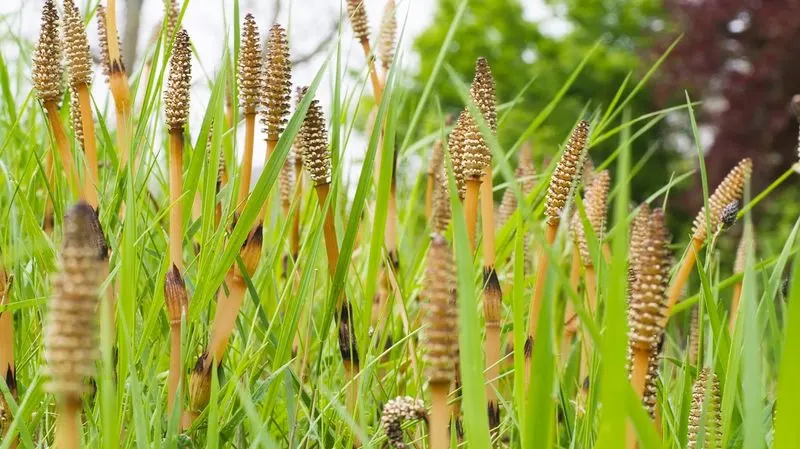
With ancestors growing as tall as trees, horsetails have a history dating back 360 million years. Modern horsetails are smaller but no less fascinating, with jointed, reed-like stems. They thrive in wet environments, often found near streams and marshes. Known for their silica content, they were used historically for scrubbing pots. Horsetails are resilient, spreading through underground rhizomes. Their survival illustrates the power of adaptation, maintaining their niche despite dramatic changes in flora and fauna. These ancient plants continue to intrigue botanists and nature enthusiasts, offering insights into the planet’s evolutionary past and ecological diversity.
Dawn Redwood
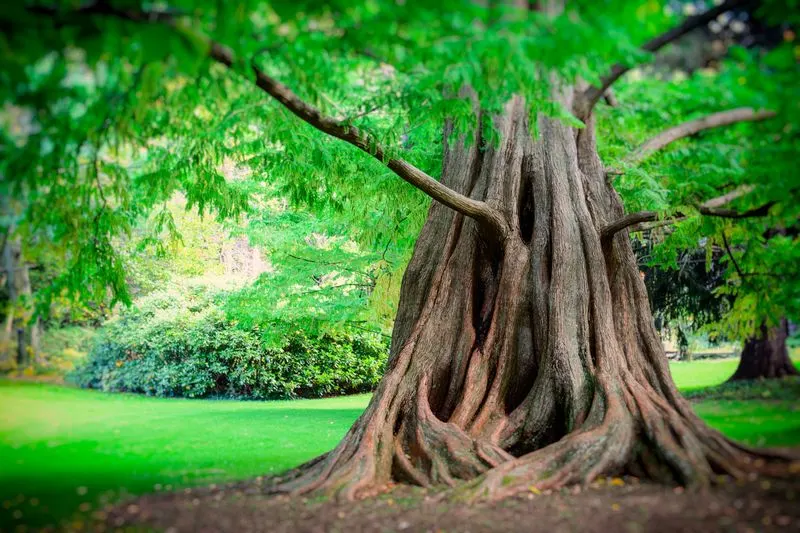
Once thought extinct, the Dawn Redwood was rediscovered in China in the 1940s. This deciduous conifer dates back 100 million years, distinguished by its unique reddish-brown bark and feathery foliage. Unlike most conifers, it sheds its needles in winter. The tree’s revival from near oblivion highlights nature’s unpredictability. It grows rapidly, making it a favorite for reforestation. Its ancient legacy and rediscovery story spark curiosity and wonder. Dawn Redwoods connect us to a distant past, showing that even when a species seems lost, nature can surprise us with enduring resilience and unexpected survival.
Araucaria
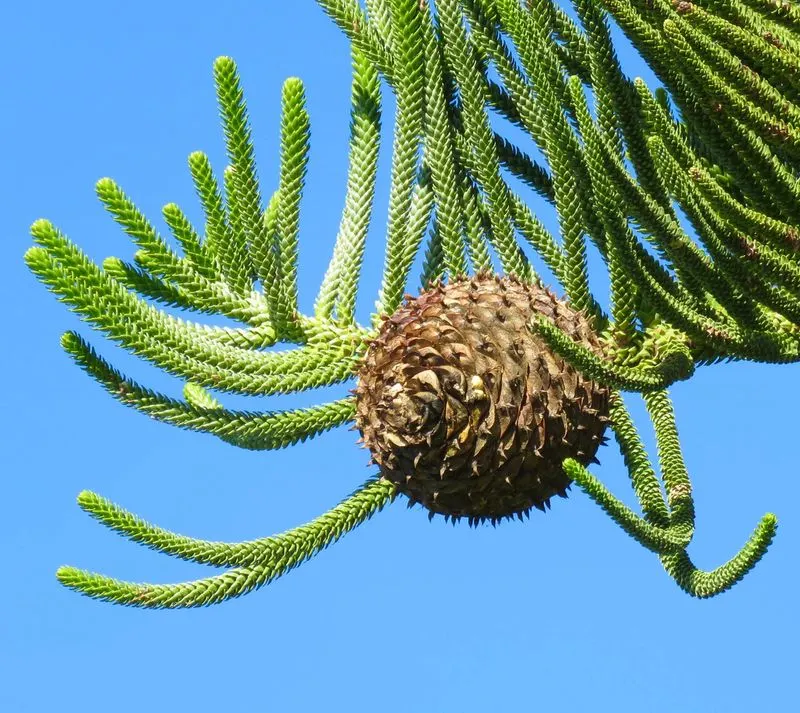
Araucaria trees, including the famous Monkey Puzzle tree, date back to the time of dinosaurs, over 200 million years ago. Known for their distinctively geometric branch structure, they are native to South America and Australia. The trees’ tough, scale-like leaves deter herbivores, an adaptation from their prehistoric past. Araucarias thrive in diverse climates and are popular ornamental trees. Their unique appearance and ancient lineage make them a subject of fascination. Despite changes in the environment, their ability to adapt and survive speaks volumes about the resilience of life through ages. They are living monuments to Earth’s ancient history.
Ferns
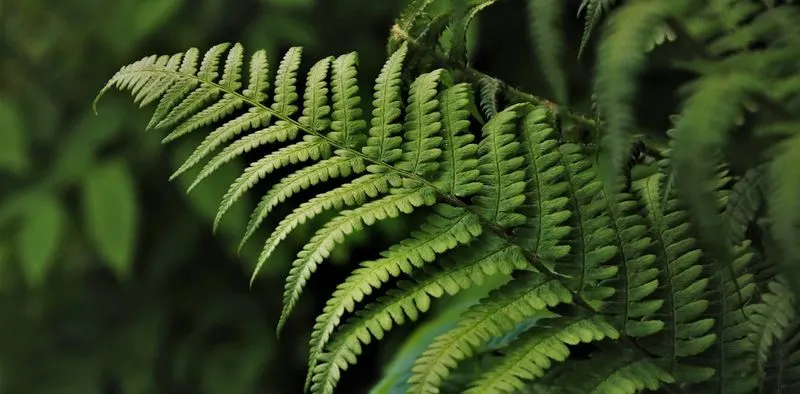
Ferns, among the oldest plant groups, have been around for over 360 million years. Known for their delicate fronds, they thrive in moist, shaded environments. Unlike flowering plants, ferns reproduce via spores. Their ability to colonize diverse habitats highlights their adaptability. Ferns are often used in gardens for their lush, decorative appearance. Despite their ancient origins, they continue to evolve, showcasing the dynamic nature of plant life. Their enduring presence illustrates the evolutionary success of simple, yet effective, survival strategies. Ferns remind us of life’s intricate patterns and the beauty found in resilience and adaptation.
Sequoia
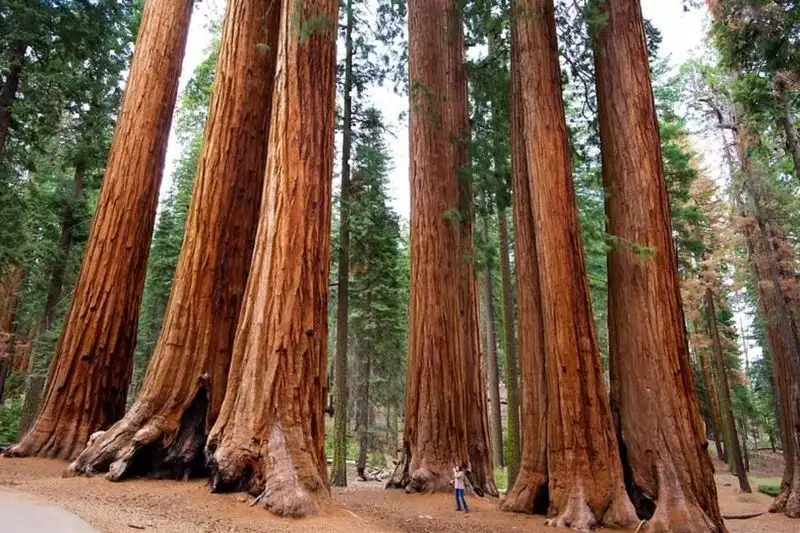
Giant Sequoias have dominated forests for millions of years. Their colossal size and longevity are legendary, with some trees living over 3,000 years. These giants thrive in the Sierra Nevada, adapting to fire and drought. Their thick bark and deep roots make them resilient against natural disasters. Sequoias play a crucial role in their ecosystem, providing habitat and maintaining biodiversity. Their sheer size and age command respect and awe. As symbols of endurance, Sequoias remind us of nature’s power and the importance of preserving ancient ecosystems for future generations to admire and learn from.
Metasequoia
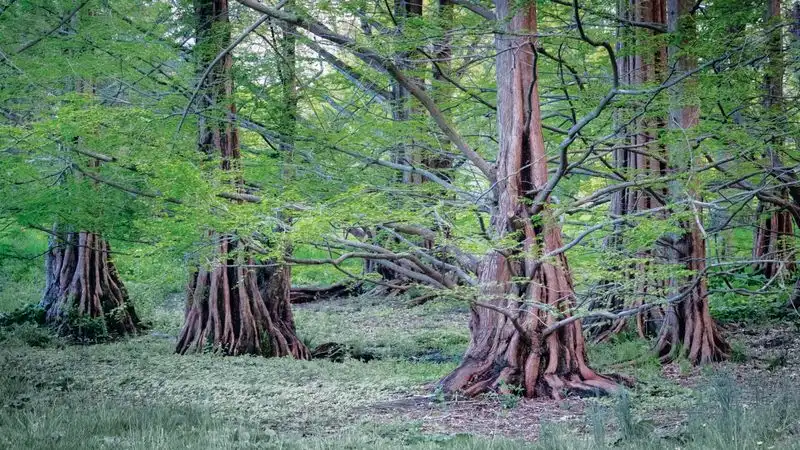
The Metasequoia, or Dawn Redwood, was rediscovered in China, thought extinct for millions of years. Its vibrant green foliage turns copper in autumn, offering a seasonal display. Unlike its evergreen relatives, Metasequoia is deciduous, shedding leaves annually. This tree’s rediscovery was a botanical sensation, sparking global interest. Metasequoias grow rapidly and are used in reforestation efforts. Their ancient heritage and unique characteristics make them popular in parks and gardens. As modern custodians of these ancient trees, we appreciate their survival story, reflecting both the fragility and tenacity of life across vast epochs. Their legacy continues to inspire.
Magnolia

Magnolias have existed for approximately 95 million years, blooming since the age of dinosaurs. These trees are renowned for their large, fragrant flowers and glossy leaves. Unlike many plants, magnolias evolved before bees, so they rely on beetles for pollination. Found in Asia and the Americas, they are treasured in gardens for their beauty and historical significance. Their flowers symbolize endurance and nobility, captivating audiences worldwide. Magnolias remind us of nature’s timeless beauty and the intricate relationships within ecosystems. As enduring witnesses to history, they continue to enchant and inspire, connecting us to a distant, fragrant past.
Welwitschia
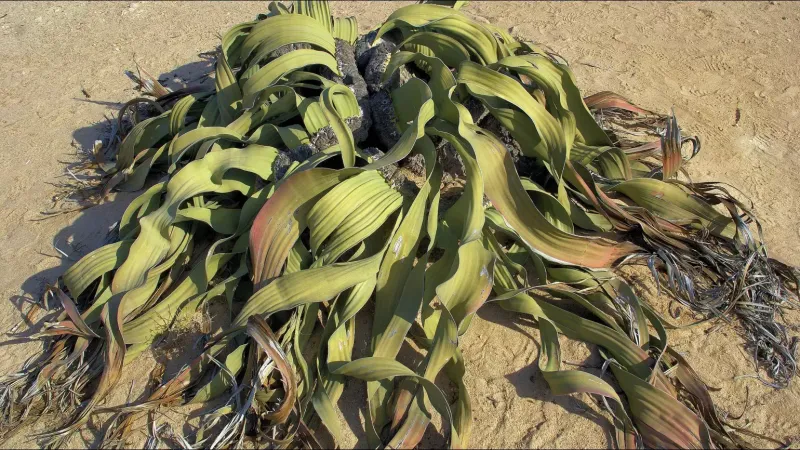
Endemic to the Namib Desert, Welwitschia is a remarkable survivor, living for over 1,000 years. With only two leaves that grow continuously throughout its life, this plant thrives in extreme conditions. Its deep taproot allows it to access underground water, a vital adaptation for desert survival. Welwitschia’s unique appearance and longevity intrigue botanists and ecologists. Despite harsh environments, it maintains a stable population, illustrating resilience. As a symbol of endurance, Welwitschia offers insights into ecological adaptation and survival. Its presence in one of the world’s oldest deserts links us to ancient terrestrial processes and evolutionary wonder.
Agathis
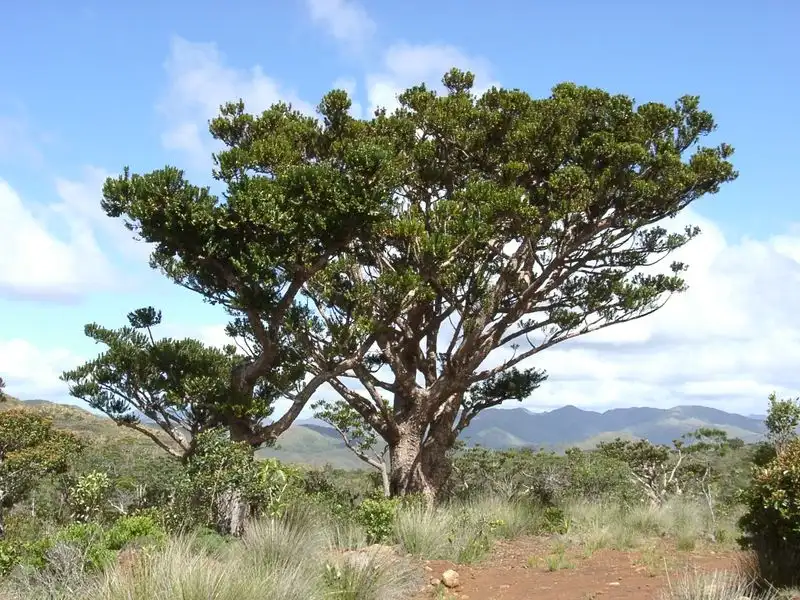
Agathis, or kauri trees, have origins tracing back 200 million years. Native to the southern hemisphere, they are known for their towering presence and valuable timber. Agathis trees have smooth bark and large, leathery leaves, adapting over epochs to survive environmental shifts. In New Zealand, kauri forests are home to rich biodiversity. Conservation efforts focus on protecting these ancient giants from pests and diseases. As living connections to prehistoric times, Agathis trees inspire awe and respect. Their continued survival is a testament to nature’s adaptability and the intricate balance of forest ecosystems across the globe.
Tree Ferns
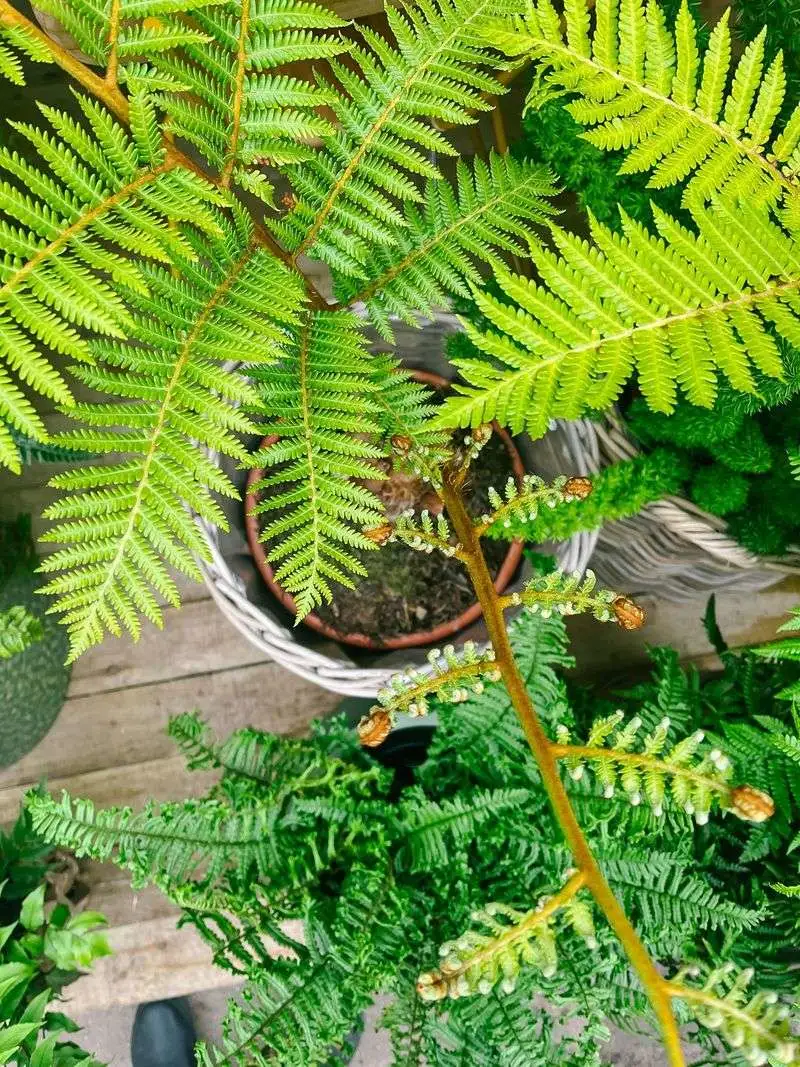
Tree ferns have existed for over 200 million years, thriving in the age of dinosaurs. They are recognized by their tall, trunk-like stems and expansive fronds. Preferring moist, shady habitats, they contribute significantly to the biodiversity of their environments. Tree ferns reproduce through spores, a primitive yet effective method. Their presence enriches gardens and natural landscapes, offering a glimpse of prehistoric flora. As resilient survivors of past climate changes, tree ferns embody the adaptability of ancient plant life. Their towering elegance and historical lineage continue to captivate scientists and garden enthusiasts worldwide.
Podocarps

Podocarps are ancient conifers, with a lineage dating back over 200 million years. Found primarily in the southern hemisphere, these trees vary in size and form, adapting to diverse climates. Their foliage ranges from needle-like to broad-leaved, illustrating evolutionary versatility. Podocarps are vital to forest ecosystems, offering habitat and food for wildlife. They have been a part of human culture for centuries, valued for timber and ecological importance. Preserving Podocarp forests is crucial for biodiversity and climate regulation. Their enduring presence highlights the resilience of conifers in changing environments and their role in Earth’s ecological tapestry.
Baobab

Baobabs, known as the “trees of life,” have a history spanning millions of years. Their thick trunks store water, enabling survival in arid environments. Found in Africa and Madagascar, these iconic trees support diverse ecosystems. Baobabs provide food and shelter for animals and humans alike. Their longevity and unique appearance inspire myths and legends. As climate change impacts their habitats, conservation becomes crucial. The baobab’s ability to endure harsh conditions underscores nature’s inventiveness. These majestic trees remind us of life’s interconnectedness and the importance of preserving natural heritage for future generations.
Yew
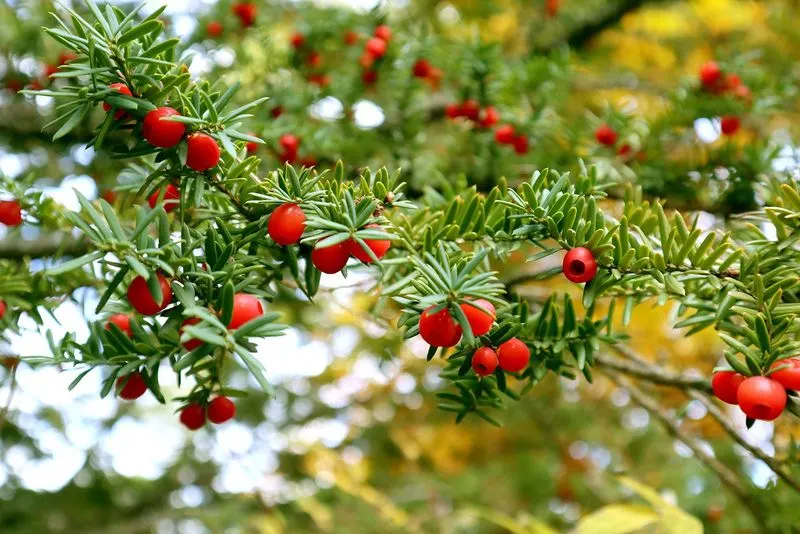
Yews have thrived for over 200 million years, known for their longevity and resilience. With dark green needles and toxic red berries, they were revered by ancient cultures for their mystical properties. Yews often grow in churchyards and are associated with immortality. Their wood is incredibly durable, historically used for making longbows. Despite their toxicity, yews play a vital role in ecosystems, providing habitat and food for wildlife. Conservation of ancient yews ensures the preservation of biodiversity and cultural heritage. Their presence today continues to captivate and mystify, holding stories of an ancient world within their twisted trunks.
Cedar of Lebanon
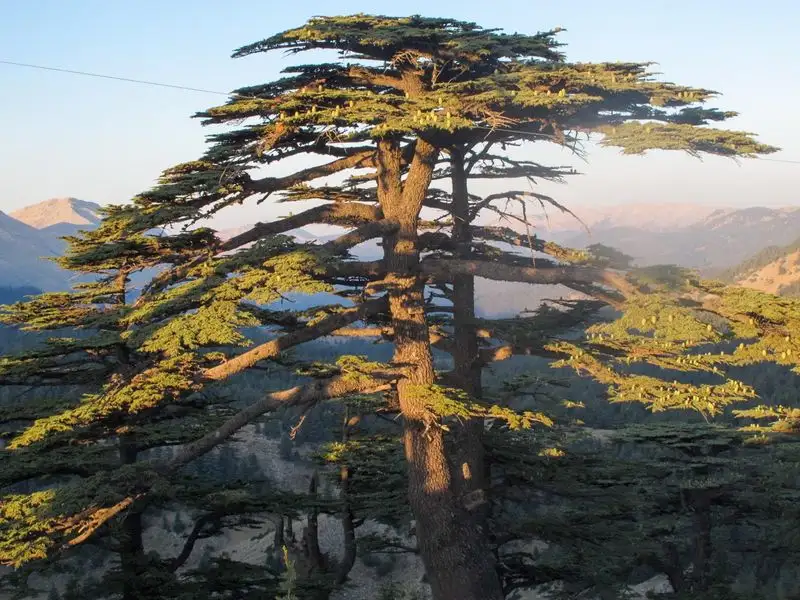
The Cedar of Lebanon has stood for millennia, with origins tracing back to ancient forests. Its majestic stature and fragrant wood have made it a symbol of strength and endurance. Historically used in shipbuilding and temples, the cedar is mentioned in numerous cultural texts. Despite deforestation, efforts are underway to preserve these ancient trees. Cedars play a crucial role in their ecosystems, supporting biodiversity. Their enduring presence in cultural history underscores their significance. As sentinels of the past, Cedars of Lebanon evoke reverence and inspire ongoing conservation efforts, ensuring they continue to thrive for future generations to admire.
Bristlecone Pine
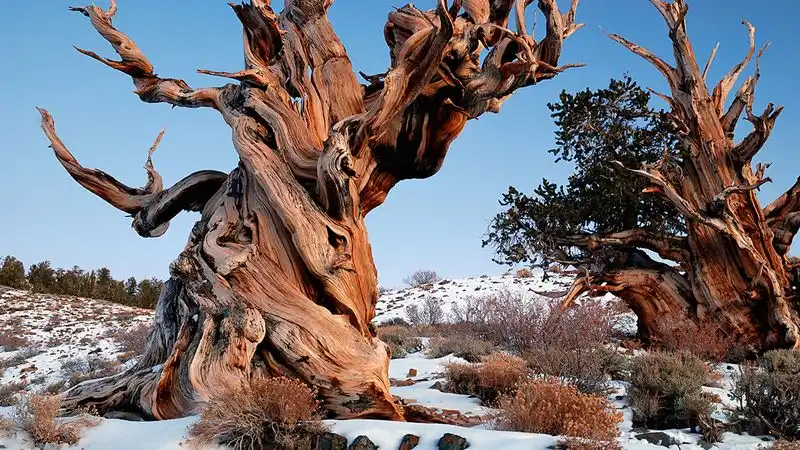
Among the oldest living organisms, Bristlecone Pines have survived for thousands of years. These trees grow in harsh, high-altitude environments, adapting to extreme conditions. Their gnarled, twisted forms reflect a long history of resilience. Bristlecones thrive where few others can, embodying survival against adversity. Their longevity offers insights into climate history, providing valuable data for scientific research. These ancient pines remind us of nature’s tenacity and the slow, deliberate processes underlying survival. As symbols of endurance, they continue to inspire awe and respect, highlighting the importance of preserving ancient ecosystems and the lessons they hold.
Araucaria araucana
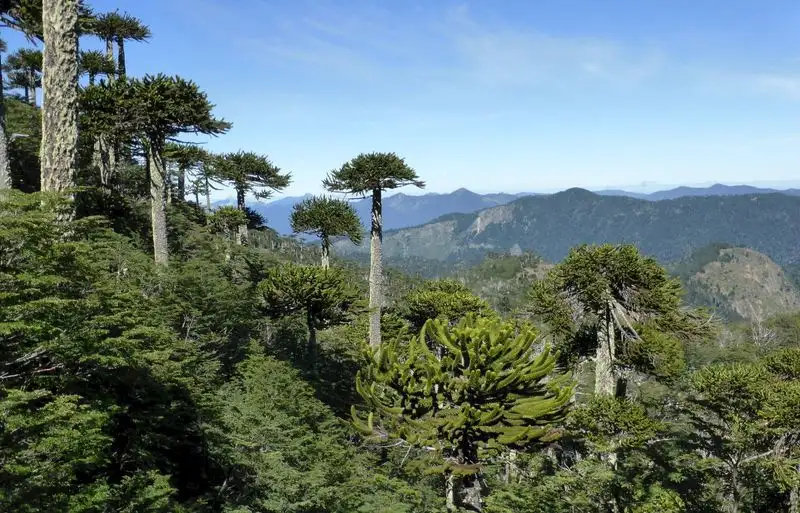
Commonly known as the Monkey Puzzle tree, Araucaria araucana is native to Chile and Argentina. This ancient species dates back to the Jurassic period, with distinctive, spiky branches that deter herbivores. Its ability to thrive in diverse climates showcases adaptability. The tree’s seeds are a food source for indigenous peoples, reflecting ecological and cultural significance. Conservation efforts protect these trees from overharvesting and habitat loss. As living relics of a prehistoric era, they capture imagination and scientific interest. Their survival story emphasizes the importance of biodiversity and the intricate web of life that sustains ecosystems.
Banyan Tree
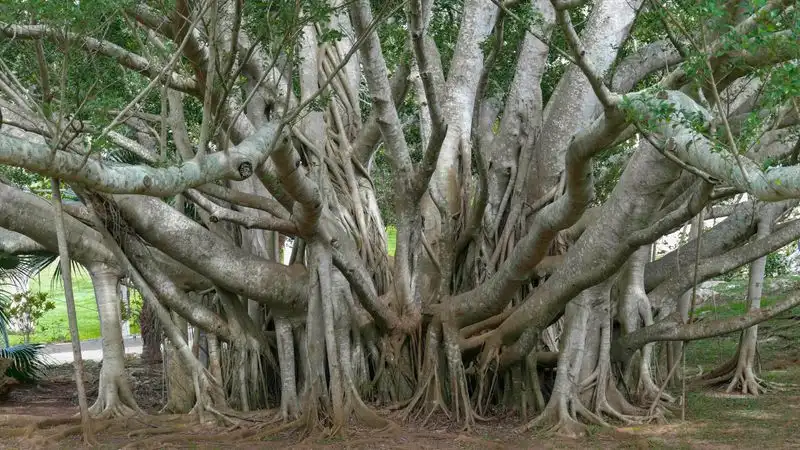
Banyan trees, with their expansive canopies and aerial roots, are a marvel of nature. These trees have been around for millions of years, adapting to various tropical environments. The roots grow downwards to form additional trunks, allowing the Banyan to cover vast areas. They provide habitat for numerous species, creating complex ecosystems. Throughout history, Banyans have been symbols of shelter and community. Their resilience and ability to thrive in dynamic environments highlight the power of nature’s architecture. These trees remind us of the interconnectedness of life, offering shade, sustenance, and spiritual significance across cultures.
Eucalyptus

Eucalyptus trees, native to Australia, have been part of the landscape for millions of years. Known for their aromatic leaves and smooth, peeling bark, they adapt well to fire-prone environments. Eucalypts regenerate quickly after fires, making them ecological pioneers. They play a vital role in their ecosystems, providing food and shelter for wildlife. The leaves contain oils used in medicinal and commercial products. Eucalyptus forests are significant for biodiversity and carbon sequestration. Their adaptation strategies offer insights into resilience and ecological balance. As emblematic trees of Australia, they continue to shape the continent’s natural and cultural heritage.
Giant Kelp
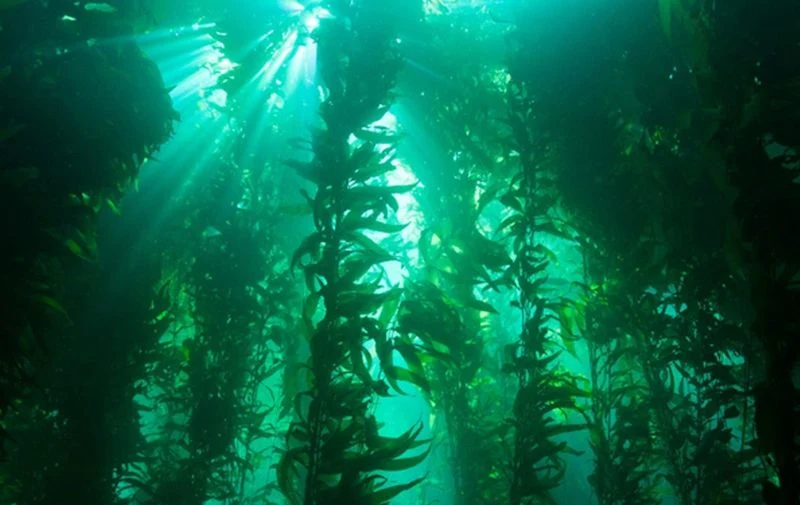
Giant Kelp has been part of ocean ecosystems for millions of years, forming underwater forests that support diverse marine life. These algae grow rapidly, reaching lengths of over 100 feet. Kelp forests are vital for coastal ecosystems, providing habitat and food for countless species. They also play a role in carbon sequestration, mitigating climate change impacts. Kelp’s adaptability to ocean conditions showcases nature’s resilience. Harvested sustainably, it’s used in food, cosmetics, and agriculture. As guardians of marine biodiversity, Giant Kelp forests remind us of the importance of preserving ocean health and the intricate balance of aquatic ecosystems.
Papyrus
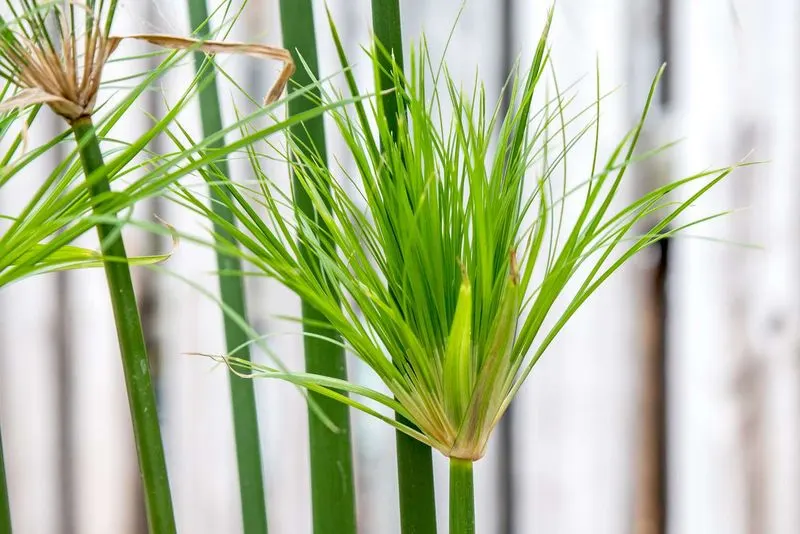
Papyrus, an ancient plant, thrives in wetland areas and has been used by humans for thousands of years. Its tall, sturdy stems were historically used to make paper in ancient Egypt, revolutionizing communication. Papyrus supports rich biodiversity, offering habitat for various species. Its ability to filter water makes it important for wetland ecosystems. As wetlands face threats from human activity, conserving papyrus is crucial for maintaining ecological balance. The plant’s historical significance and ecological role highlight the interconnectedness of natural and human histories. Papyrus stands as a symbol of ancient ingenuity and enduring natural processes.
Monkey Puzzle Tree

The Monkey Puzzle Tree, native to the Andes Mountains, is a true relic from the dinosaur age. Its spiky branches and distinctive cone shape make it easily recognizable among evergreen trees. This ancient conifer, scientifically known as Araucaria araucana, has survived for millions of years, adapting to varied climatic conditions.
In its native habitat, the Monkey Puzzle Tree thrives in volcanic soil, demonstrating remarkable resilience. Today, it is often grown as an ornamental tree in gardens worldwide, admired for its unique appearance. Its slow-growing nature often intrigues gardeners, making it a living piece of history in modern landscapes.

